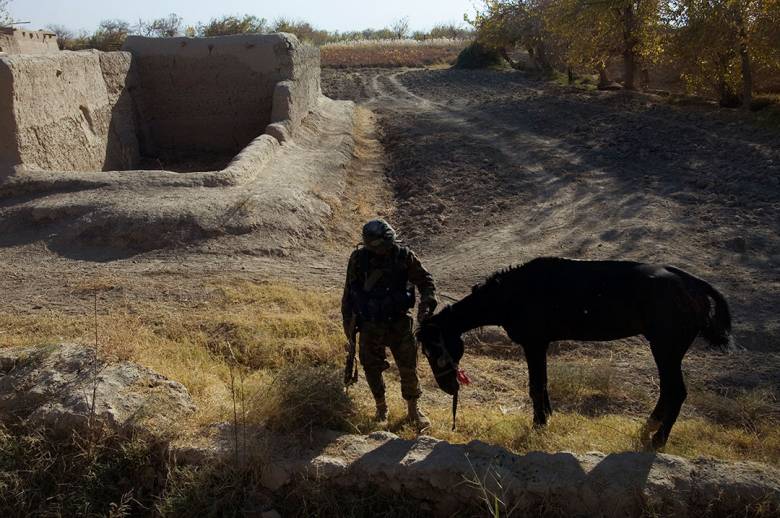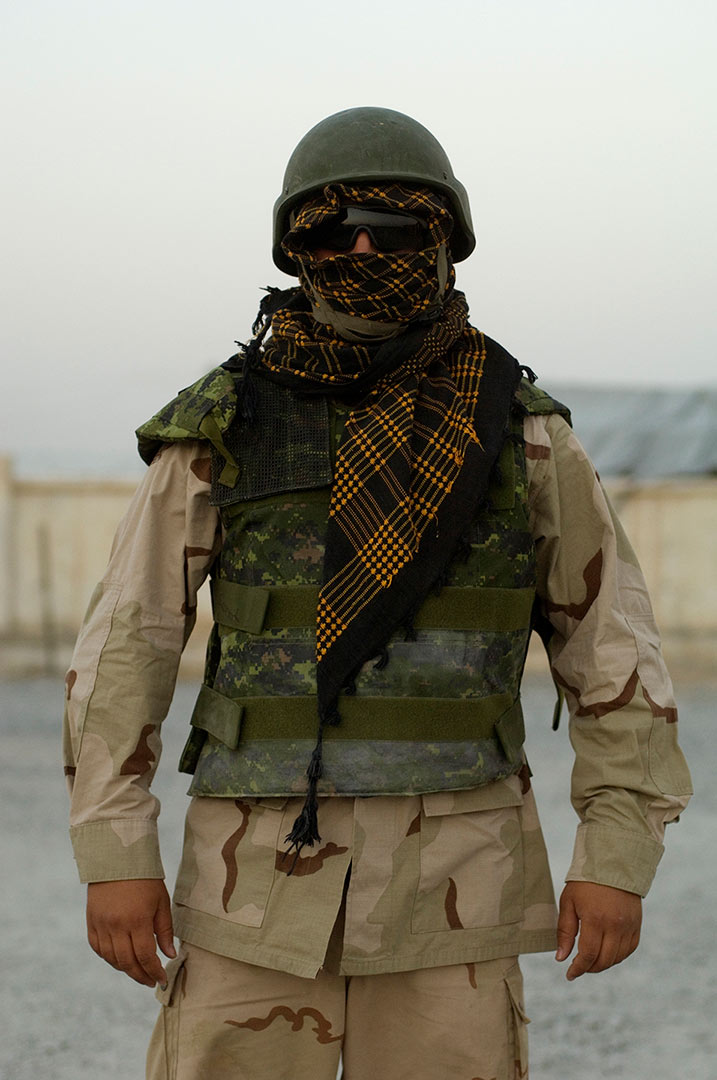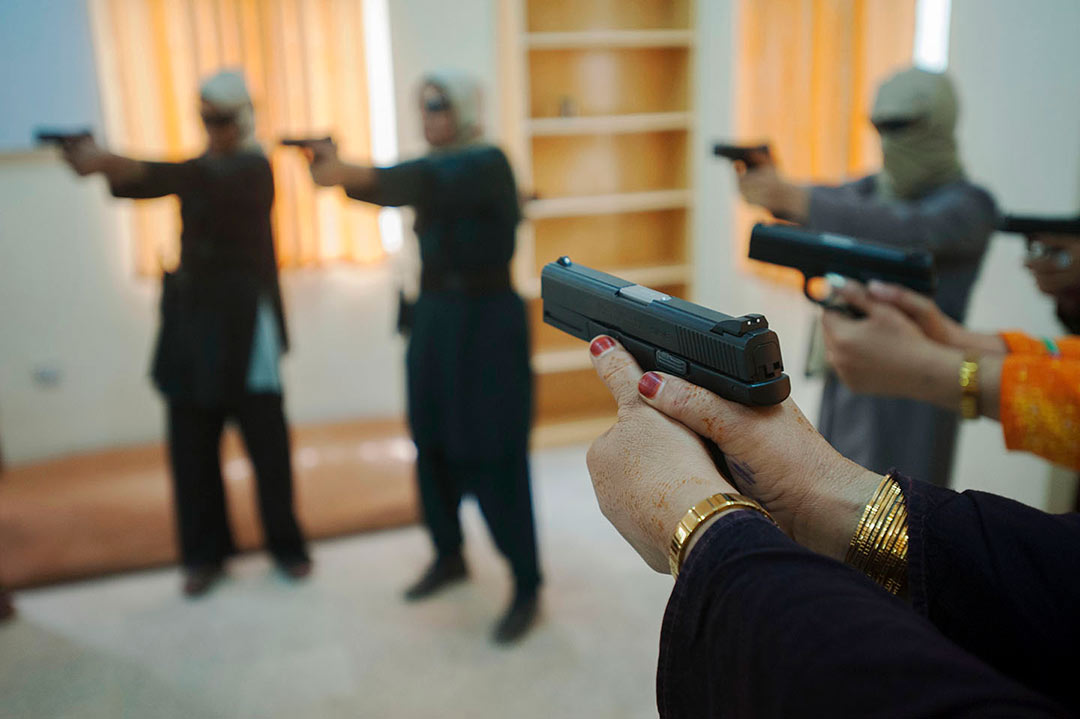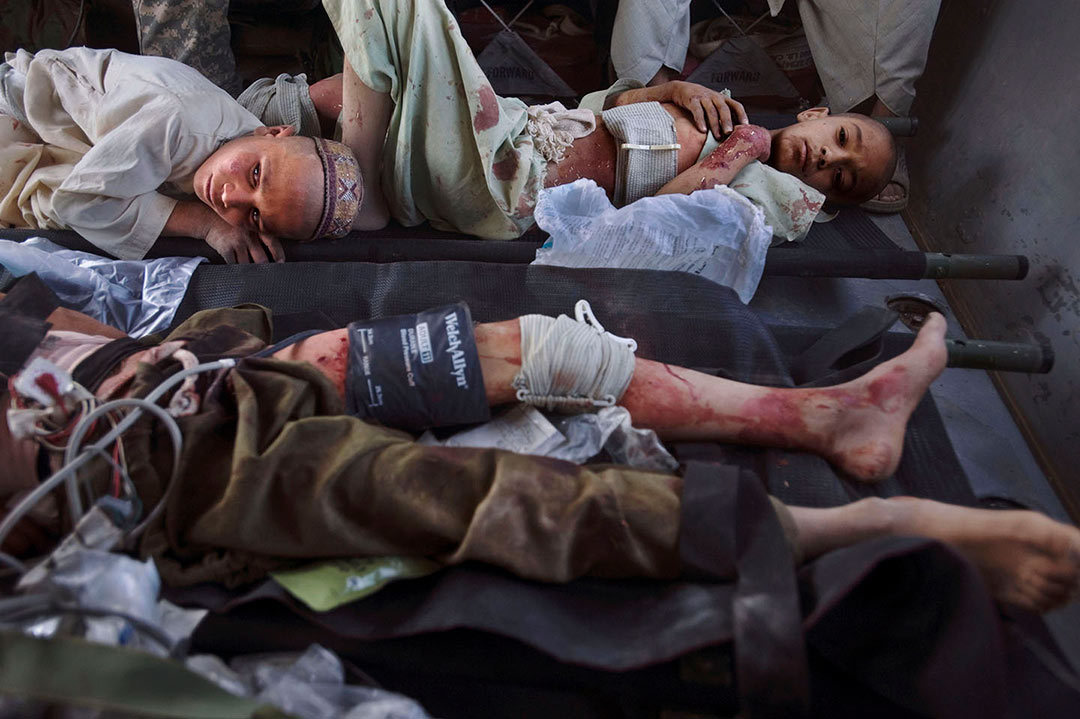
Cover Photo © Louie Palu. An Afghan soldier pets an abandoned horse during a break in fighting somewhere located between Howz-E-Madad and Sangasar in Kandahar, Afghanistan.
Reader discretion is advised: Some readers may find the photographs in this story disturbing.
OCAD University graduate (’91) Louie Palu is an award-winning documentary photographer and filmmaker who has worked for the past 30 years covering social political issues, including war, human rights and poverty. His work has appeared in festivals, publications such as the National Geographic Magazine, exhibitions and collections internationally. He is the author of Front Towards Enemy and directed the documentary Kandahar Journals.
Palu covered the war in Afghanistan from 2006 to 2010, and in light of recent events taking place in the country, OCAD U caught up with him to talk about his time in the country and his perspective on the current situation.
Why did you want to go to Afghanistan and spend so much time there?
I went to Afghanistan because my entire life had been filled with my parents’ oral histories related to a war they experienced, which included the arrest of my grandfather by the Nazis, public hangings and aerial bombardment in the Second World War. I felt that documenting the effects of trauma and violence was a very personal thing for me that I wanted to understand.
Before I went to Afghanistan for the first time in 2006, I photographed Afghan refugees in Pakistan in 2004. On both those of those assignments, I was a staff photographer at The Globe and Mail. After the 2001 U.S.-led invasion of Afghanistan, millions of refugees left to join millions more in neighbouring Pakistan. Then, in 2004 the UN had a program to repatriate Afghans back to Afghanistan and I spent time with two families, one with nine children immigrating to Canada and another travelling through the tribal regions back to Afghanistan.
When the Canadian government announced a combat mission in 2006, I felt as though it was something that was going to be important to document. After working in Afghanistan as a staff photographer for the Globe, when I got back I knew I had to return and cover the war long term. So, I quit my job, sold or gave away many of my belongings and covered the war for four more years independently.
The reason I spent so much time there was to get the unique imagery I felt expressed what I was seeing and this required me to spend months in the field, so I kept going back. Sometimes getting the right three to four images took a year of planning and months in the field. However, some aspects of the war in Afghanistan are elsewhere, like in Guantanamo Bay, Cuba where detainees are being held related to the attacks on 9/11. Again, that is an aspect of the 20-year war that is often forgotten or excluded from the narrative.

Looking back on your time there, what do you wish people understood about Afghanistan and its people?
I never feel like I am looking back at anything, I learned things in Afghanistan that are a part of my everyday rituals now. I know many Afghans that have moved to Canada and the U.S. and I interact with them often.
What I would like anyone reading this is to understand that there are wars and human rights violations going on right now in many places around the world. Don’t wait for a catastrophic event like this before understanding how you can make a difference.
Please seek out insightful journalism and learn about these places and the issues; make it an issue with your elected officials. Use Afghanistan right now to look at yourself and your own countries’ history to see injustices like the residential school system in Canada.
You can make a difference by contributing to organizations with experts and people on the ground like the Committee to Protect Journalists, Doctors Without Borders and the International Red Cross and Red Crescent. Donate as much as you can to these NGOs and stay informed.
How do you feel about what’s going on in Afghanistan now?
I think what’s most important as a photojournalist is to share what the people I interacted with are feeling. The obvious feelings are disbelief, shock and fear. I have some colleagues that have already assisted some Afghans getting evacuated out of the country. My fixer (local guide and translator) got out of Afghanistan recently. There is more going on in the background I am trying to support on evacuations, but can’t talk about right now, but many people are working to help get as many Afghans out as possible.
However, I remember clear language from many Western governments that we would not abandon Afghanistan again. There are U.S. bases around the world dating back to the Second World War and Korea, so why wouldn’t the U.S. and Canada complete what they started in Afghanistan?
How this has all played out is disturbing. It feels like we are back at a pre 9/11 moment, where governments failed to understand the threat, the manner of attack by terrorists and timing of their strategy. That makes me afraid for the growth of new unknown groups in the vacuum of this Taliban campaign.

Much of what’s shaping our impressions of what’s happening in Afghanistan right now are images, like at Kabul airport, for example. As someone who has been in war zones and crisis situations, can you set the scene for us a bit more? What are we missing just looking at the images?
Photography is about seeing, not only in a literal way, but it helps us to use our imagination in relation to this case, which is a real event.
Afghanistan needed our help before this latest turn of events at the Kabul airport. It’s always been an extremely poor country plagued by corruption, violence and war. The view of Kabul is disturbing; however, what we can’t see is the rest of the country. In some ways, it’s like looking at all of Canada through the lens of one city, imagine how limited and misleading that would be.
I also have seen some disparaging remarks aimed at the media and the coverage of the war being a part of not seeing the collapse coming. My response is at least three of my colleagues were killed there and several more lost their limbs to bombings; one was shot and countless have injuries related to trauma affecting their mental health.
There are also some alarming problems with photo editing going on, where some news organizations are trying to match the infamous photo of a helicopter in the last days of the U.S. in Vietnam with helicopters leaving Afghanistan. That’s a mistake and far too simplistic. Vietnam is not Afghanistan. They are two very distinct and different places with very different histories and cultures. What that does is put us in the past and not in the moment of this new situation. We should be looking for new imagery to understand Afghanistan not Vietnam. Photo editing, like curating should be about visual interpretation, understanding the deeper layers of communicating visually and complimenting or aligning unique visuals to a story or writing.
Another problem is many of the photographs are not by journalists. This means there is no commitment to a code of ethics, independent witnessing and no accountability. There were many hand-out photos from the military and government published in the media, which means we are not guaranteed to see all sides of what is unfolding when a government is the source of images. When the government provides the photos, they can if they choose to, only show what they deem positive by their definition to serve their purposes.
Having covered Kandahar for five years I can share that I have seen the worst that humans can behave and as of now, we have no idea what anyone is doing outside of Kabul that can be verified.

I have seen people murdered in every possible manner, including hanging, being shot in the face, blown into pieces and having their limbs separated from their bodies. The Taliban won and lost with this war with the rest of the country at the same time.
In the future, I have no idea how the country will function, there is no real plan but to take over. Afghanistan is pretty much a narco state supplying more opium for heroin than anywhere in the world. Being a jihadist may help in winning a battle in these past few weeks, but things look bleak for operating and maintaining the infrastructure of a country of 38 million people when there is no competent governance, international support or the necessary skilled individuals left in country to operate all the daily necessary aspects of life like electricity, water and hospitals. People can’t even get money from bank machines; most of Afghanistan has no bank machines.
The prospects for ongoing fighting with ISIS, Shia militia groups connected to Iran and a small but newly formed Northern Alliance aligned resistance group means things may only get worse leading to possible civil war. There are thousands of Taliban fighters throughout the country with no real structure, what happens when there is no food, fuel or money to pay anyone?
Western governments may claim success after they evacuate several thousand people and saying they tried to fix Afghanistan, but what happens to the 38 million left behind? This is the tragic and terrible unknown future of Afghanistan that every country who participated in the war is equally responsible for.
Note from OCAD University - should you wish to support Afghan relief efforts, here are some organizations accepting donations:
The Canadian Campaign for Afghan Peace
https://canada4afghanistan.good.do/ccap/email/
International Development and Relief Foundation
https://idrf.ca/project/afghanistan/
Women for Afghan Women
https://womenforafghanwomen.org
Women for Women International
https://support.womenforwomen.org/donate/afghanistan-emergency-2x-match?src=SBUA21082A